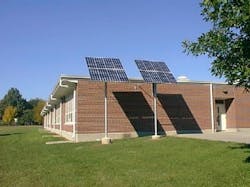More and more educators are being influenced by the Reggio Emilia approach to pedagogy, with its mantra of “environment as the third teacher”—an approach that gives Building Teams a responsibility to pay even closer attention to the special needs of today’s schools.
In addition to helping support the pedagogical aims of those owner institutions, Building Teams are also crafting new approaches to creating sustainable, high-performance K-12 schools. As school districts struggle to find the capital to build and maintain energy-efficient, healthy environments, K-12 project teams are developing strategies to help support high-performance educational facilities and stay on budget.
This approach begins with Building Teams taking an integrated approach where the architect, engineer, contractor, and building owner collaborate early on in the project and take a holistic approach to the design.
After reading this article, you should be able to:
- Discuss integrated design strategies that help make K-12 facilities more energy efficient and sustainable while reducing the cost of operations.
- Describe how current educational approaches inform school facility design, including sustainable design approaches. net-zero energy strategies, and the use of modular or prefabricated classrooms.
- List the various technologies, materials, and systems that create a learning tool out of building features and energymanagement systems. to design high-performance schools that emphasize student health and enhance classroom performance.
- Compare various design solutions and architectural features intended to encourage student interaction, physical activity and health, business community involvement, and the use of new technology in the classroom.
Take this free BDCuniversity course
